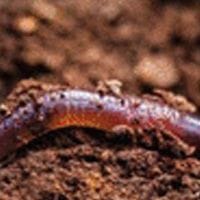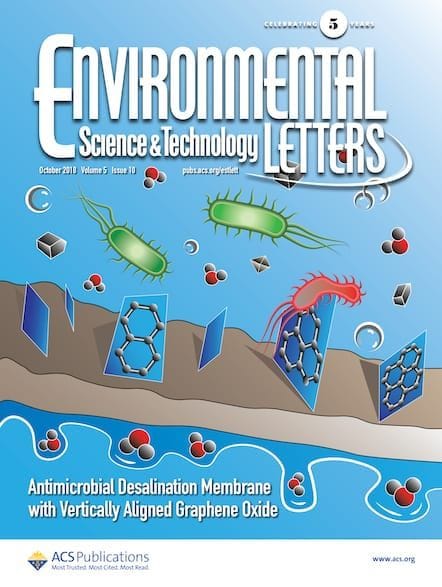Pesticides are commonly used in agriculture, but their impact goes far beyond protecting crop yields—they could even be altering the DNA of key species in our ecosystems.

First introduced in the 1990s, systemic pesticides such as neonicotinoids and triazole fungicides have been used in seed coatings to prevent damage from soil insects and microbes.1 Since these products arrived on the market, global consumption of pesticides has increased by 96%.2 But as we learn more about these chemicals, we are finding that they are retained in groundwater and soil—with unintended ecological consequences.
To highlight this, a recent study published in Environmental Science & Technology Letters reports on the damage being done to earthworms by very small amounts of systemic pesticide in seed coatings. These pesticides aren’t killing worms outright, but sublethal amounts are damaging their mitochondrial DNA.3 Much more so than its nuclear counterpart, DNA in the mitochondria is highly susceptible to environmental toxins. One potential reason is its limited repair pathway.4 Under normal physiological circumstances, minimal damage from reactive oxidative species (ROS) can be gradually repaired, but when larger amounts are generated under ROS-stressed conditions or chemical exposure, the DNA can be permanently damaged.
In their new study, the researchers used an in vivo design to explore how 30-day soil exposure to neonicotinoids—and coexposure to difenoconazole—drives mitochondrial DNA toxicity in juvenile earthworms. They used specific doses that resembled the levels left in soil after seed treatment application. The results showed a highly significant increase of mitochondrial DNA copy numbers across all exposure groups. The exposed worms also gained significantly less weight than control counterparts in clean soil.

Mitochondrial DNA Damage in Earthworms: A Hazard Associated with Sublethal Systemic Pesticide Exposures
DOI: 10.1021/acs.estlett.3c00914
Mitochondrial dysfunction has also been suggested as a pathway for honeybee colony collapse disorder. Work published in 2020 suggests damage to mitochondrial DNA from sublethal neonicotinoid exposure could potentially be causing the bees’ thermoregulation system to malfunction.5 Honeybees survive winter by clustering together and shivering their flight muscles, thereby maintaining an optimal hive temperature. But at the level of each individual bee, this is a highly energy-dependent activity, and it looks like dysfunctional mitochondrial DNA could mimic the lower energy production of aged organisms.6 Neonicotinoids are not killing bees outright on contact but essentially causing accelerated aging in honeybee populations, making it impossible for hives to sustain the heat needed to survive the winter.
Earthworms are one of the most important beneficial below-ground invertebrates, responsible for up to 80% of animal biomass in healthy soil—and it has been reported that approximately 80–98% of neonicotinoids used in seed coatings end up in the soil.3 Additionally, the potential effects of neonicotinoids on pollinators has led to the European Union suspending the use of these pesticides on crops that attract bees7 and accelerating a review by the U.S. Environmental Protection Agency.8
These findings highlight the need for additional research and a critical reassessment of systemic pesticide use, considering their far-reaching and unintended ecological consequences. By fostering a better understanding of how these chemicals impact vital species like earthworms and honeybees, we can work towards more sustainable agricultural practices that protect and preserve our environment.

Stay Connected with Environmental Science & Technology Letters
References
- Douglas, M. R. and Tooker, J. F. Large-Scale Deployment of Seed Treatments Has Driven Rapid Increase in Use of Neonicotinoid Insecticides and Preemptive Pest Management in U.S. Field Crops. Environ. Sci. Technol. 2015, 49, 8, 5088–5097.
- Leading countries in agricultural consumption of pesticides worldwide in 2021. Statista 2023. www.statista.com.
- Zeng, C. et al. Mitochondrial DNA Damage in Earthworms: A Hazard Associated with Sublethal Systemic Pesticide Exposures. Environ. Sci. Technol. Lett. 2024, 11, 3, 195–200.
- Muangphra, P. et al. Chronic toxicity of commercial chlorpyrifos to earthworm Pheretima peguana. Environ. Toxicol. 2016, 31 (11), 1450–1459.
- Lu, C. et al. Mitochondrial Dysfunction: A Plausible Pathway for Honeybee Colony Collapse. Environ. Sci. Technol. Lett. 2020, 7, 4, 254–258.
- Lee, H. C. and Wei, Y. H. Mitochondrial role in life and death of the cell. J. Biomed. Sci. 2000, 7 (1), 2–15.
- European Commission Commission implementing regulations (EU) No 485/2013. Off. J. Eur. Union 2013, L139, 12–26.]
- EPA Actions to Protect Pollinators. U.S. Environmental Protection Agency 2015. www.epa.gov.